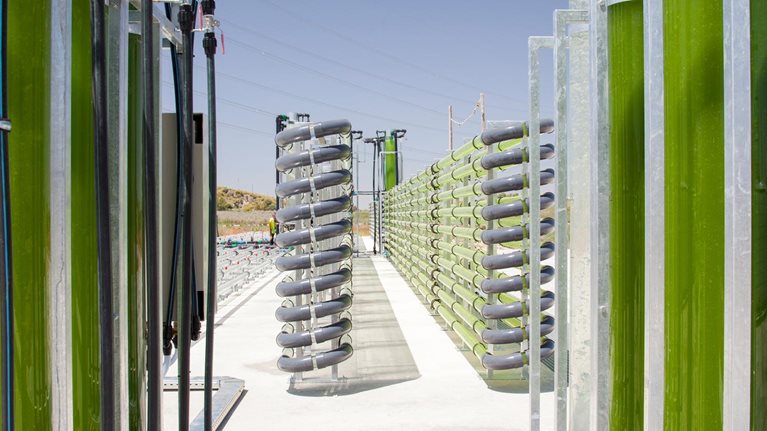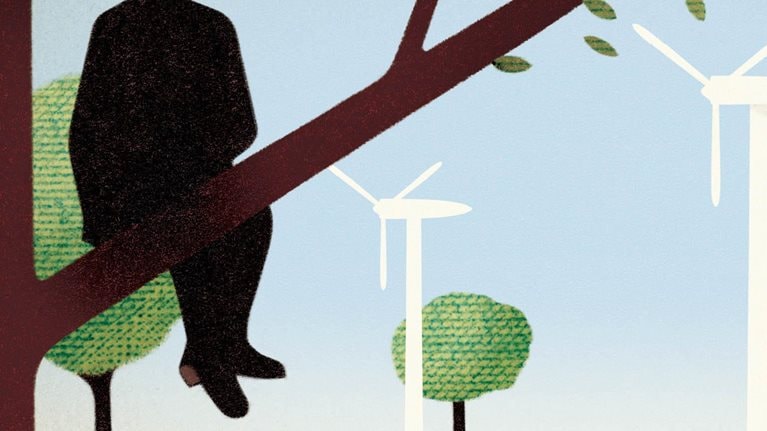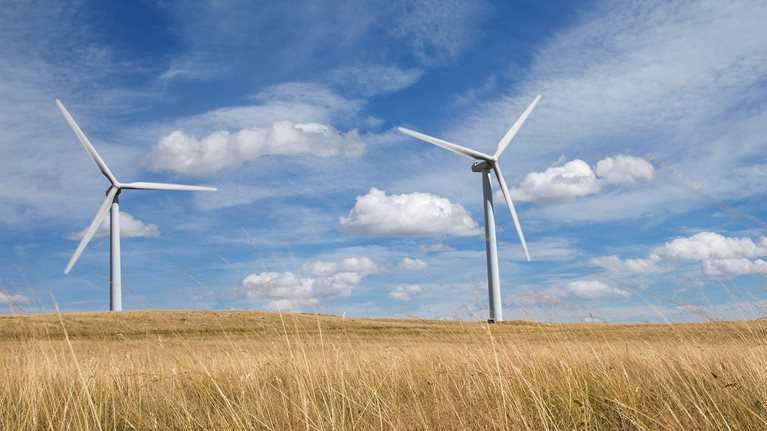Blessed with lush beauty and a temperate climate, the islands of Hawaii constitute a distinctive environment—not only in natural terms but also in how they produce and use energy. In the power sector, the state has the highest degree of petroleum dependency in the United States. It also has the highest electricity prices and the highest prices at the gas pump.
Recognizing the cost of this profile, in 2008 Hawaii began to focus on reducing its dependence on oil and cutting its greenhouse gas (GHG) emissions. At that time, the state developed mid- and high-range scenarios that described what could be accomplished by 2030, depending on how aggressively it acted.

How has Hawaii progressed compared with that analysis? The headline is that the state has come a long way. Oil still accounts for 69 percent of its power needs (compared with less than 1 percent in the rest of the country). But that is down from 83 percent a decade ago. As for GHG emissions, the trend is also positive (Exhibit 1). As of 2015 (the latest year for which data is available), emissions had declined 15.5 percent, far ahead of the state’s 2030 midrange scenario and not far from its 2030 high-range one.
All this is encouraging. And what’s fascinating is how Hawaii got there.
Where Hawaii is making fast progress
Solar power comes in two forms: large industrial-scale projects and smaller distributed-generation photovoltaic (PV) systems. As late as 2005, solar of either variety barely existed in Hawaii—there was only enough to power a few hundred homes. By 2008, its potential was already evident. The state’s midrange scenario envisioned 377 megawatts (MW) of solar power by 2030, with PV systems accounting for 207 MW, or a little more than half. In fact, more than 700 MW of solar capacity (90 percent of which is PV) has already been installed (Exhibit 2). Solar is the state’s largest single source of renewable energy, and Hawaii also ranks first in the United States in solar power per household.

Economics explains why the solar market became so hot. The price of solar panels and other components fell sharply, in large part due to inexpensive imports from China. Balance-of-system costs, which refer to everything necessary to install the panels and connect them to the grid, also declined sharply. Inverter prices have fallen 7 percent a year since 2015, and installation costs have fallen 15 percent. A welcoming regulatory environment also helped. For example, for a number of years, the state allowed people to sell power back to the grid at retail rates. Known as “net metering,” this encouraged homeowners to install rooftop systems because they could sell what they couldn’t use at retail prices.
When solar costs began to fall, the technology became competitive with conventional power—and eventually became routine. Today, almost one in five Hawaiian households has a rooftop panel. In fact, distributed-generation solar took off so fast that local utilities found it difficult to absorb it all. In 2015, the state limited net metering—and solar still continued to grow. Even without this incentive, for many homeowners installing rooftop panels just made sense. Wind has followed a similar, if less dramatic, trajectory. With 206 MW installed, it has already blown past the 2030 midrange scenario of 140 MW and is the state’s second-most-important renewable resource. As with rooftop solar, wind deployment grew faster than expected because technology and market conditions improved. And there is more to come: new projects are under way, including offshore.
Where the rate of progress is slower
On the other hand, even the midrange 2030 scenario for geothermal looks out of reach. Hawaii built a single geothermal plant in 1993—and while this has expanded, no new ones have been added. One important reason is that many promising sites are in areas of spiritual, ancestral, or aesthetic significance, and getting approval can be difficult.
Would you like to learn more about our Sustainability & Resource Productivity Practice?
The prospects for battery electric and hybrid electric vehicles (xEVs) are difficult to gauge. The midrange scenario was for xEVs to account for 16 percent of the market by 2030 (the high range was 42 percent). As of 2017, they were at only 3 percent. That said, the rate of electric-vehicle ownership is already among the highest in the country, and if growth continues at its current pace, Hawaii is on track to reach the midrange scenario by 2030. In fact, Hawaii’s high gas prices and short driving distances make it a good fit for xEVs. If the state can continue to reduce the cost of electricity—it is down more than 20 percent since 2012—and xEVs also get cheaper, then the relative economics versus conventional cars could improve markedly, and we could see battery electric vehicles comprise 19 percent to 27 percent of total vehicle sales in Hawaii by 2030. As the case of solar has shown, when the economics improve, consumer behavior can change—fast.
What’s new
One technology that was not on the radar a decade ago but seems ready for takeoff is energy storage. The ability to store energy makes it possible to use renewables 24 hours a day. One industrial-scale lithium-ion battery-storage project is already operating in Hawaii, and dozens of smaller ones are at work, with more in the pipeline. In addition, small-scale installations are growing fast. When the state restricted net metering, battery-storage systems became more attractive: excess power couldn’t be sold anymore, so it made sense to store it instead. In 2015, there were only five permits for residential solar-plus-storage permits in Honolulu; in 2017, there were 731, accounting for more than a quarter of new projects. As recently as 2010, lithium-ion battery-pack costs were almost $1,000 per kilowatt-hour; by 2016, they were down to $230, and could fall to as little as $100 by 2020, according to McKinsey research.
Hawaii aims to get 100 percent of its power from renewable sources by 2045; as of 2016, renewables accounted for 27 percent of total electricity sales. The goal, then, is ambitious; in fact, it represents the biggest target in the shortest time frame of any state. How Hawaii goes about its energy business will therefore be a matter of wide interest. Other markets can learn from its experiences what policies and practices worked, and adapt them to their own circumstances. And if recent history is any guide, progress can come quickly—and from unexpected directions—when the economics work.


